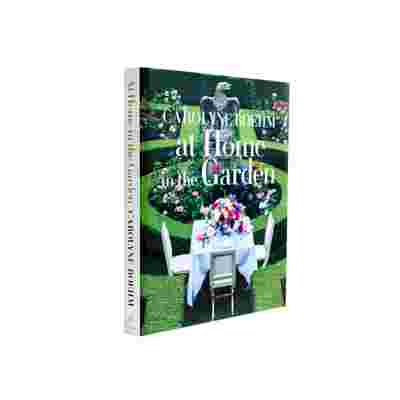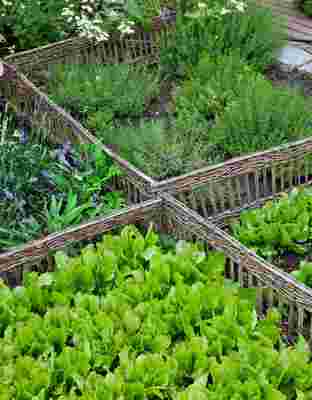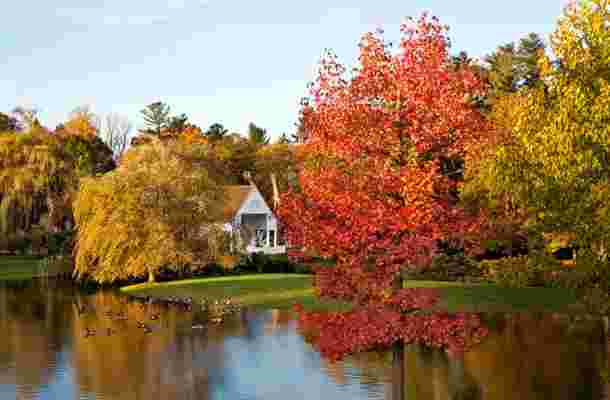November 17,2022
Carolyne Roehm's Tips for Growing a Gorgeous Garden
by David Stewart
Making life more beautiful is all I’ve ever wanted to do. It’s why I’ve spent most of my time in the visual world, working as Oscar de la Renta’s assistant for nearly a decade and then running my own fashion house for almost as long—all the while decorating houses and planting gardens for myself. When it comes to gardens, I want an atmosphere of happiness like at my grandparents’ farm in Missouri. It wasn’t fancy; there were no parterres or herbaceous borders. Instead red ‘Blaze’ roses climbed over a white fence, and peonies bloomed in the spring. My grandma also had basic country annuals, such as zinnias, marigolds, and nasturtiums, all of which I still love. When I was a girl I would make little bouquets and sell them back to her for a nickel.
Bouquets a bit more sophisticated than those were the subject of my previous book, Flowers, published in 2012. But when I started working on At Home in the Garden, which Clarkson Potter is releasing this fall, I wanted to get away from snapping close-ups of blossoms and record larger views of my garden at Weatherstone, my house in Sharon, Connecticut. (I use a Canon EOS 5D Mark II digital camera and basically learned photography by taking too many pictures.) A broader perspective was also key. While there are a lot of great how-to books around, this one is about visual inspiration, from highlighting outdoor elements that fascinate me (topiaries, furniture, pots) to creating a garden you can entertain in. At Home in the Garden also includes my watercolors of flowers. In fact, painting is the form of meditation that works best for me—I flunked the regular kind—and it makes me look more closely at the blooms and their details.
Though the garden at my house in Charleston, South Carolina, is just getting established, I’ve tended its Yankee counterpart for three decades, sometimes with the help of landscape designers like Charles Stick, Bruce Kelly, David Varnell, and Deborah Nevins. It was my first real garden, and since I’m an average gardener—I can plant beautiful flowers and grow decent vegetables but don’t really know anything about drainage—I’ve made every mistake possible.



Planting allées of sugar maples in soil with a high clay content, which retains water, was one disaster. Most of the trees drowned, and I ended up replacing them with red maples that don’t mind wet feet. That’s also why I grow so many willows. And if you dig a pond, be prepared for Canadian geese and all that dung. (I’d fill in the pond, but I’m sure my dogs would just roll in something else.)
I’ve gone through numerous infatuations, too. Remember when Bradford pear trees were in fashion?Or when everyone wanted chocolate cosmos and you couldn’t find them anywhere? I certainly succumbed to those temptations, just as I fell for the 1980s fad of white gardens like theone British writer Vita Sackville-West planted at Sissinghurst Castle more than 60 years ago. Finally it got to be too much, so to simplify the property and lessen the workload, I dismantled the white garden and dispersed its plants all over.
Of course, there are also mishaps that are beyond your control. Last winter was so severe in my area—people call it the Icebox of Connecticut—that most of one boxwood parterre died, and I have yet to replace it all. People who come to see the garden after reading the book will think I’m a liar!
Garden lovers will travel anywhere for inspiration, and some of my favorite landscapes are those at England’s Cranborne Manor and Hatfield House (both created by the Dowager Marchioness of Salisbury) and the famous mossgardens at Kyoto’s Koinzan Saiho-ji temple. You don’t understand green until you’ve seen that moss. But the most amazing place is Prieuré Notre-Dame d’Orsan, a garden that I’ve blogged about (at carolyneroehmom) and where I went a few years ago for my birthday.
The Orsan gardens are in Maisonnais, in the heart of France, and were planted about 25 years ago by architects Sonia Lesot and Patrice Taravella. They purchased a 12th-century priory, studied medieval tapestries and illuminated manuscripts for landscaping ideas, and cultivated espaliered fruit trees and bordered vegetable beds with wattle fencing made of woven willow branches. It was so magical and peaceful that I told myself, “This is what I hope heaven is like.”






